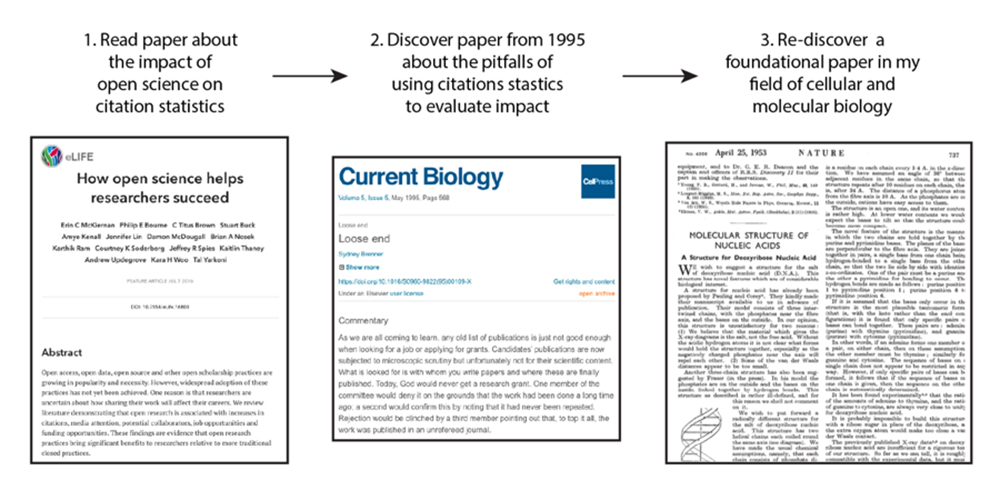October is Open Access Month. Throughout the month, guest contributors will present their perspectives on the value of open access to research, scholarship and innovation at The University of Texas at Austin.
This installment provided by Rayna Harris (ORCID ID:0000-0002-7943-5650), PhD Candidate, Cell and Molecular Biology.
Open access publishing is critical for ‘daisy chain’ reading of scientific papers

Whenever I read a scientific paper, there is almost always a citation that grabs my attention and begs to be read. I love it when I can click on a citation and then read the full text. This ‘daisy chain’ process of citation searching (where the second paper leads me to a third paper, which leads me to a forth, and so on) gives me a great appreciation for all the previous research that contributes to current knowledge.

When my citation search leads me to a paper that is not open access, I get frustrated because its halts the excellent momentum I had going for gaining new new knowledge. There is a saying in my lab that “if the research isn’t published it doesn’t exist” because it has not been disseminated to broader audiences. I would like to modify this quote to say “if the research is not published and open access then it doesn’t exist” because pay-walled papers are not freely discoverable.
Open access publishing is necessary for dissemination of ideas because it gives readers the ability to read any paper anytime anywhere. My hope is that one day I will publish a scientific paper that 1) is open access, 2) cites only open access papers, 3) which in turn cite only open science papers, and so on. This way, future readers can daisy-chain their way through the history of research that lead to current understanding.
